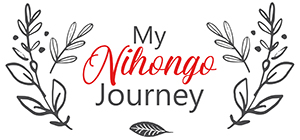こんにちは! I will be putting together a series on learning hiragana, to not only help myself solidify the hiragana I have learned, but to also help guide you through learning hiragana as well. Learning hiragana ensures that the rest of your Japanese learning goes smoothly. To say that learning hiragana will create a foundation for your Japanese, would be an extreme understatement. You see, by taking the time to learn hiragana, you will be learning the very basics of Japanese pronunciation. This was the first step for my own journey to learning Japanese, and should be yours as well.
What is Hiragana exactly?
You will find that hiragana is one of three parts of the Japanese writing system. The other two parts of the writing system are katakana and kanji, which we will focus on later. Hiragana is also a syllabary, and not an alphabet. Confused yet? Let’s examine this difference in greater detail, shall we?
An alphabet as you know, is full of letters which represent single consonants and vowels. Where as, a syllabary represents characters that contain the sounds of syllables. Need an example? Well, in English, the alphabet we have consists of letters such as “i” and “j”. The “i” is a vowel, and the “j” is a consonant. However, in hiragana, there are characters such as “も” and “で”, which stands for “mo” and “de”, respectively. Almost all of the hiragana include a vowel sound, with the exception of the hiragana character, “ん”.
In English, we have 26 letters, and hiragana consists of 46 total characters within the syllabary. You may think, “Oh no, there are twice as many to remember?!” Well, yes, but once you know them, you will be well on your way to speaking Japanese, and it’s really not as hard as it may sound.

Wait a sec, what about Romaji? Can’t I just use that?
First, I want to quickly explain what exactly “romaji” is. While you may think it’s some form of the movie, “Jumanji” (without the “n”), don’t be fooled! (Lol, I couldn’t help myself here.) Romaji is the romanization of the Japanese language. For example, the word “cute” is 「かわいい」in hiragana. If we were to romanize it using our Latin based letters, it would be, “kawaii”.
While romaji may be useful while you are a complete beginner to the Japanese language, it is best to not rely on it completely. Many Japanese textbooks and language resources will refrain from using romaji, except maybe in the very first chapter or two. (This is true for the Genki book that I am currently studying from.) Romaji has helped me in the beginning, while chatting on HelloTalk with Japanese people, who were trying to teach me Japanese words. However, I have found that I have become somewhat reliant on having romaji around. It’s something I have taken for granted, and I am starting to regret it now. Trust me when I say, that your time is much better spent trying to learn the hiragana, rather than putting it off until the bitter end.
With plenty of practice and studying, you too can learn hiragana in a matter of a couple of days or weeks. There are even blog posts out there that will help you learn hiragana in a matter of hours, if you search hard enough. (Or, just follow this link if you cannot wait for the first lesson I have prepared.) Personally, for me, it took a few weeks of minimal effort. What was my minimal effort? Well, simply attempting to write them down, while saying the sounds, time and time again, every few days. I bought a Japanese style Campus notebook (find the exact one here) to practice writing these out, with one hiragana per page.
Some people will tell you to not worry about learning how to write the hiragana, but personally, I want to fully learn as much of the language as I am able to. That includes, being able to physically write out the characters I learn. Also, I am the type of person who constantly is taking notes on things. It helps me to remember whatever it is that I’m trying to remember. This is no different for hiragana. And one more thing, if you ever make friends with people living in Japan, and you want to write them, wouldn’t you want to know how to write the hiragana (and later the kanji) needed to “speak” to them in Japanese in your letters?

In Closing
I know this is already starting to sound complicated, but with some time and dedication, you will be well on your way to knowing how Japanese works and flows. You will be surprised at how quickly you start to notice the various hiragana that you have learned, in anime credits, manga clips, and more! Don’t let this phase you at all. We are on this journey together, aren’t we? I truly hope to have lesson one (hiragana “vowels”) of this new hiragana series to you within a week, if not sooner. Until then, start looking over the hiragana system on your own, to become more familiar with how it looks, and maybe even with how it sounds! And of course, if you have any questions, or comments, please feel free to comment below! I look forward to learning with you, and helping you along your own Nihongo Journey!
ありがとう!
Jessica





No Comments Found